Table of Contents
13. Nanzenji Temple – Kyoto
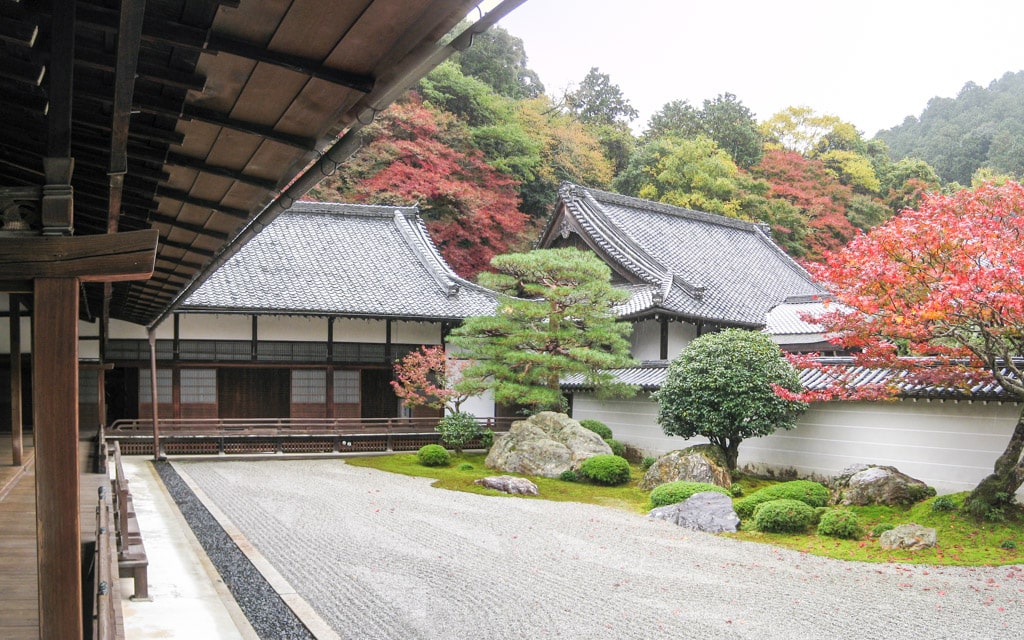
Not far from one end of the Philosopher’s Path in Kyoto is Nanzenji Temple, an extensive temple surrounded by smaller sub-temples. While the main grounds are free to enter, the surrounding temples require an entrance fee. Hard to miss is San-mon Gate, an enormous wooden gate first constructed in 1628. Just outside Hojo is a unique site that seems out of place: a large brick aqueduct. This aqueduct was built during the Meiji Period between 1868 and 1912 to transfer water between Kyoto and nearby Lake Biwa.
12. Ninnaji Temple – Kyoto
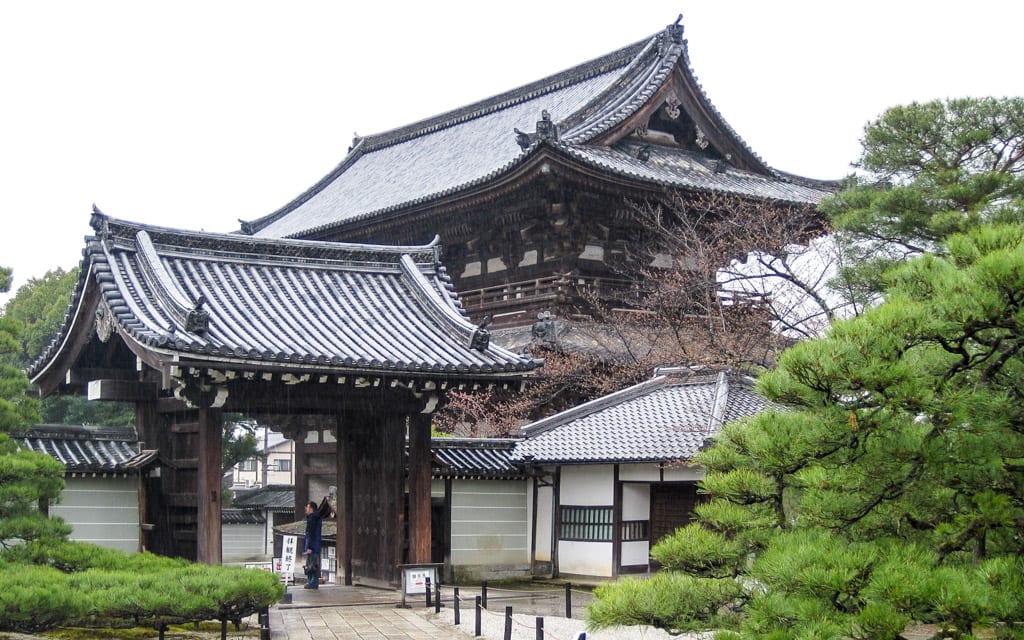
Founded in 888 by Emperor Uda, Ninnaji Temple is the head temple of the Omuro school of the Shingon Sect of Buddhism. For almost 1,000 years, reigning emperors would send one of their sons to the temple where they would take over as head priest. This tradition, which continued from 888 to 1869, gave the temple the name Omuro Imperial Palace. What makes Ninnaji Temple amazing is the former residence of the head priest, known as Goten. This residence, which was built in the style of an imperial palace, is surrounded by peaceful rock and pond gardens. As with other temples in Kyoto, Ninnaji has been added to the list of UNESCO World Heritage Sites.
11. Byodoin Temple – Kyoto
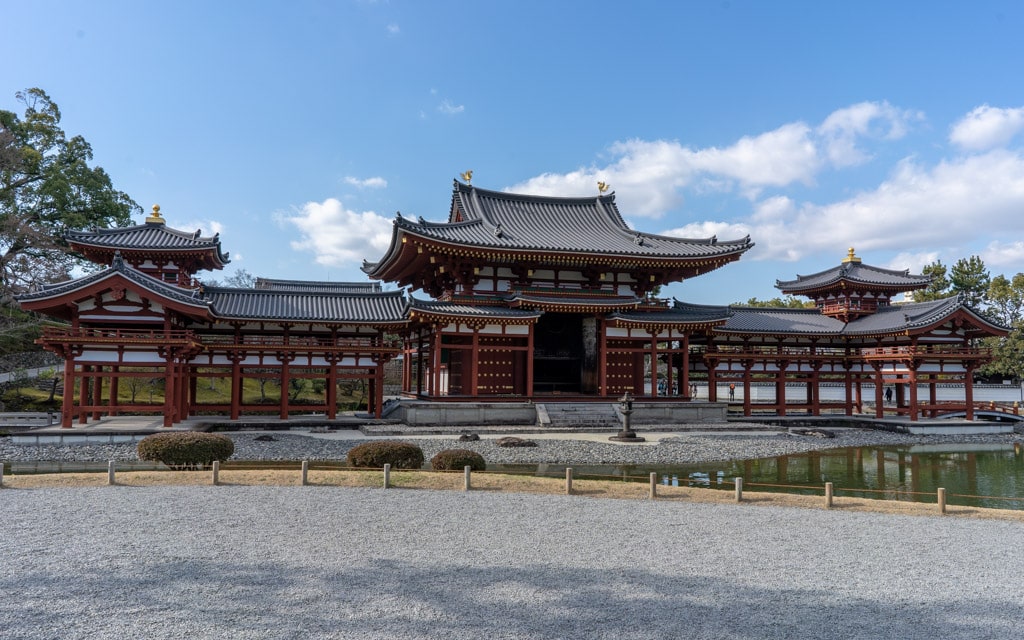
Even if you have never been to Byodoin Temple, you might already know about it. The Phoenix Hall seen above is featured on the back of the ten yen coin. Byodoin, located on the southern outskirts of Kyoto in the city of Uji, was originally built in 998 as a villa for Fujiwara no Michinaga. Michinaga was a powerful member of the Fujiwara clan that ruled the government of Japan. After his death, the villa was converted into a Buddhist temple by his son in 1052. The highlight of Byodoin Temple is the amazing Phoenix Hall. This impressive building, located on a scenic pond, is the only remaining original building. It dates back almost 1,000 years to 1053.
10. Horyuji Temple – Nara
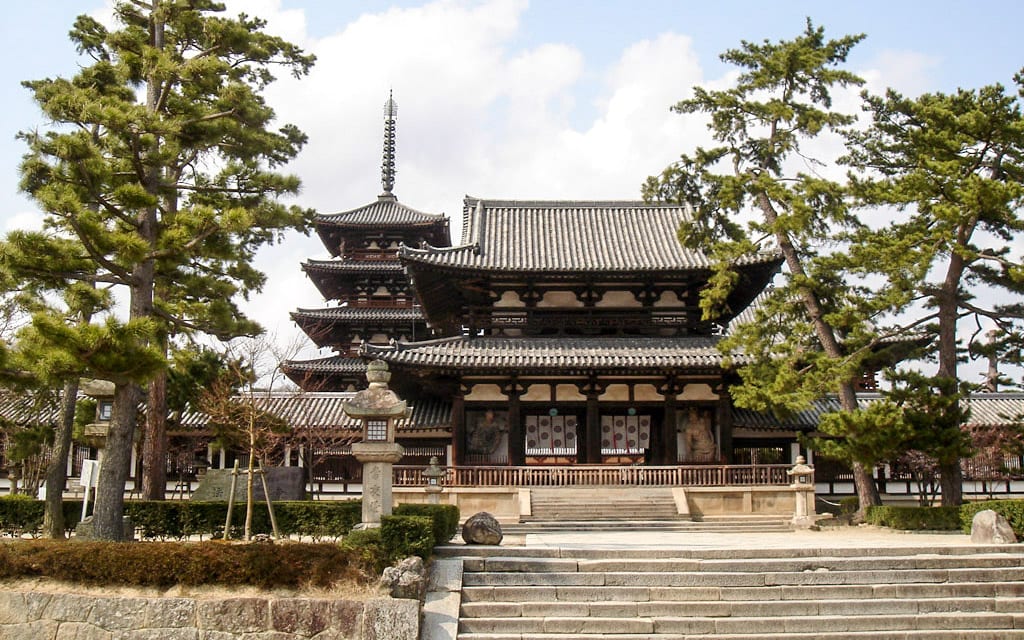
Horyuji Temple was founded in Nara by Prince Shotoku in 607. Shotoku was one of the first to spread Buddhism throughout Japan. The temple is one of the oldest in Japan. What makes Horyuji Temple so amazing is its five-story pagoda, considered to be one of the oldest surviving wooden structures in the world. The wood used for the pillars of the pagoda has been estimated to date back to 594. Now that’s old. It’s believed that a fragment of Buddha’s bone is enshrined at the base of the pagoda.
9. Saihoji Temple (Kokedera or Moss Temple) – Kyoto
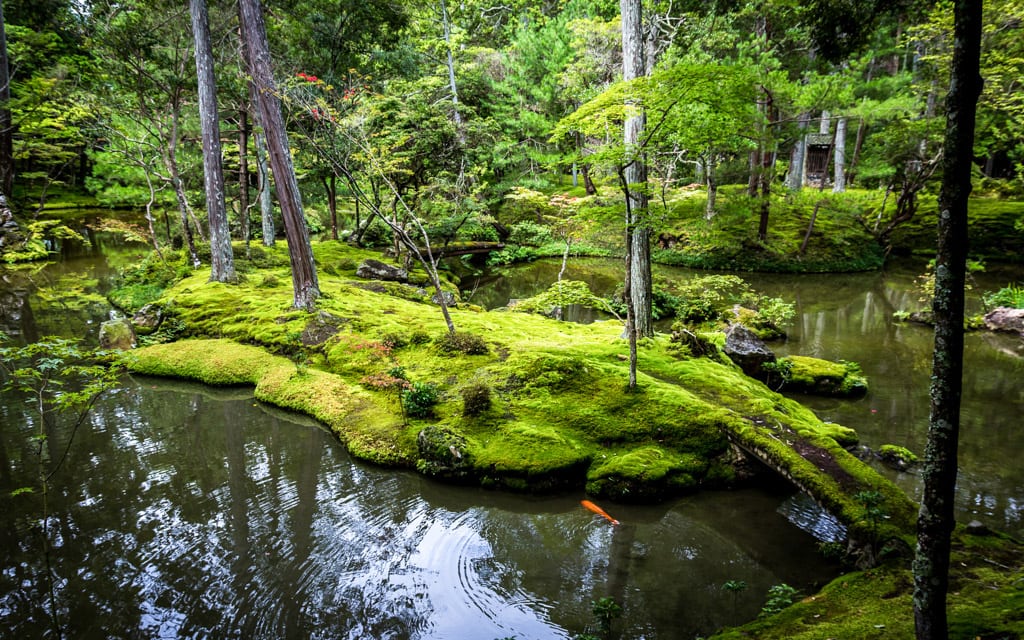
Saihoji Temple, also known as Kokedera, is a Rinzai Zen Buddhist temple famous for its moss garden. A villa for Prince Shotoku was converted into a temple in 1339. Kokedera literally means “moss temple.” Over 120 varieties of moss can be found growing on the grounds of the temple. One of the best experiences of Kokedera is walking through the beautiful green gardens. These gardens have been influential with the design of other Japanese gardens.
8. Sanjusangendo Temple (Rengeo-in) – Kyoto
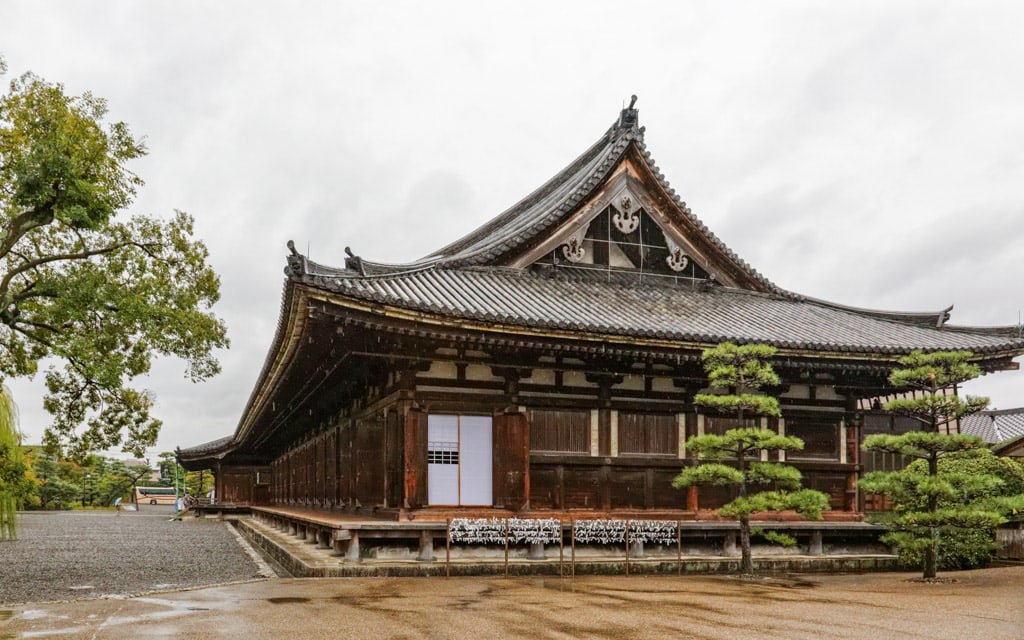
Sanjusangendo Temple, officially known as Rengeo-in, is a temple located near the Kamo River in the Higashiyama District of Kyoto. This temple dates back to 1164. The name Sanjusangendo, meaning thirty-three, refers to the number of spaces between support columns of the main hall. The main hall of the temple happens to be the longest wooden structure in Japan. What makes Sanjusangendo so special are its statues of Kannon. In the center of the main hall is a statue of the main deity, Sahasrabhuja-arya-avalokiteśvara or the Thousand Armed Kannon. To the left and right of the main statue are 1,000 life-size statues of the Thousand Armed Kannon. It’s quite a sight to see and should not be missed.
7. Kotokuin Temple (Great Buddha of Kamakura) – Kamakura
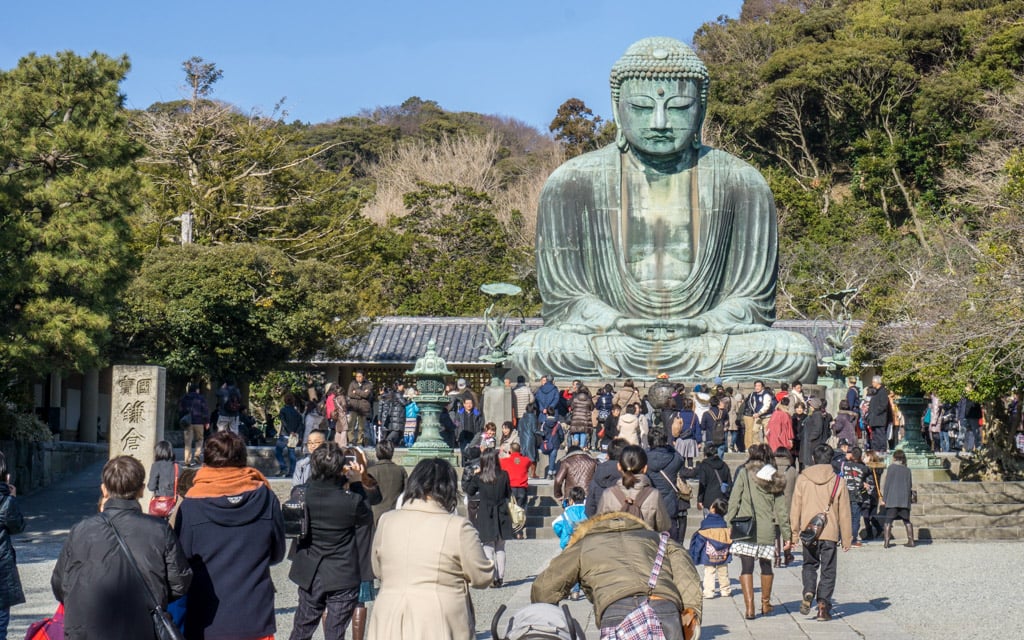
One of the best side trips from Tokyo has to be Kamakura, famous for its Great Buddha statue found at Kotokuin Temple. This well photographed statue of Amida Buddha measures in at 13.35 meters (43.79 feet) tall, making it the second tallest statue of Buddha in Japan. The tallest statue of Buddha happens to be found at Todaiji Temple in Nara (see below). This amazing statue, an icon of Japan, dates back to 1252. For a time, the statue was located inside a great hall. The hall, along with many other buildings at the temple, has long been destroyed by war, fire, and earthquakes. The statue still stands. For over 500 years, the Great Buddha statue has been standing outside in the open air.
6. Yamadera Temple (Risshakuji) – Yamagata
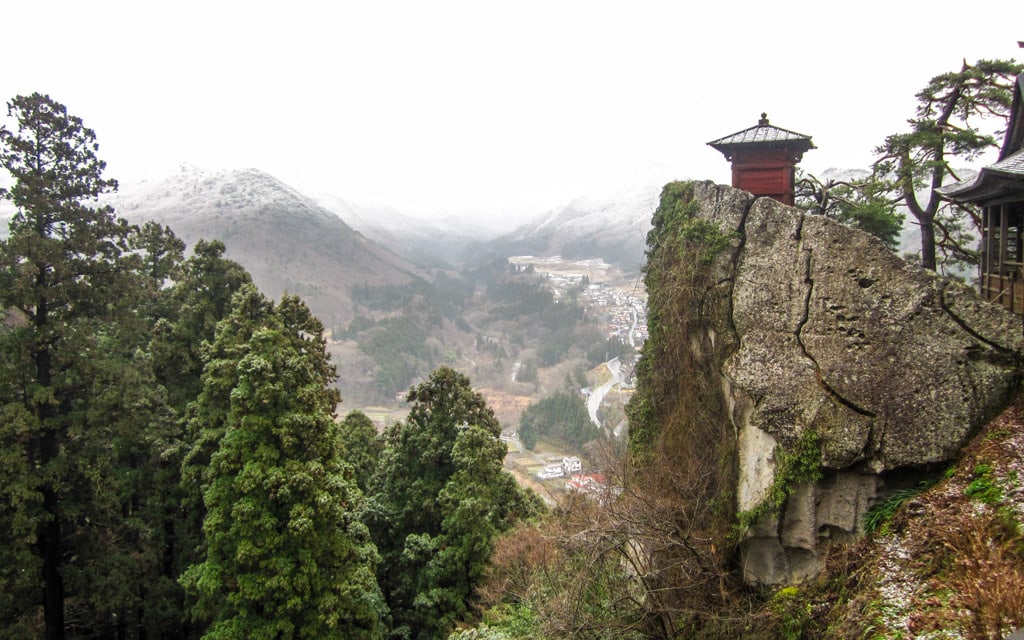
An hour west of Sendai by train is Yamadera Temple. When the temple was founded in 860, it was known as Risshakuji. What makes Yamadera Temple so amazing is its location. The grounds of this scenic temple are spread out along a steep mountainside high above the valley below. The only catch is that you have to climb up more than 1,000 stairs to reach this temple. The ascent takes about 30 minutes which will reward you with stunning views of the surrounding area below. Not surprisingly, Yamadera literally means “mountain temple.”
5) Okunoin Temple – Mount Koya
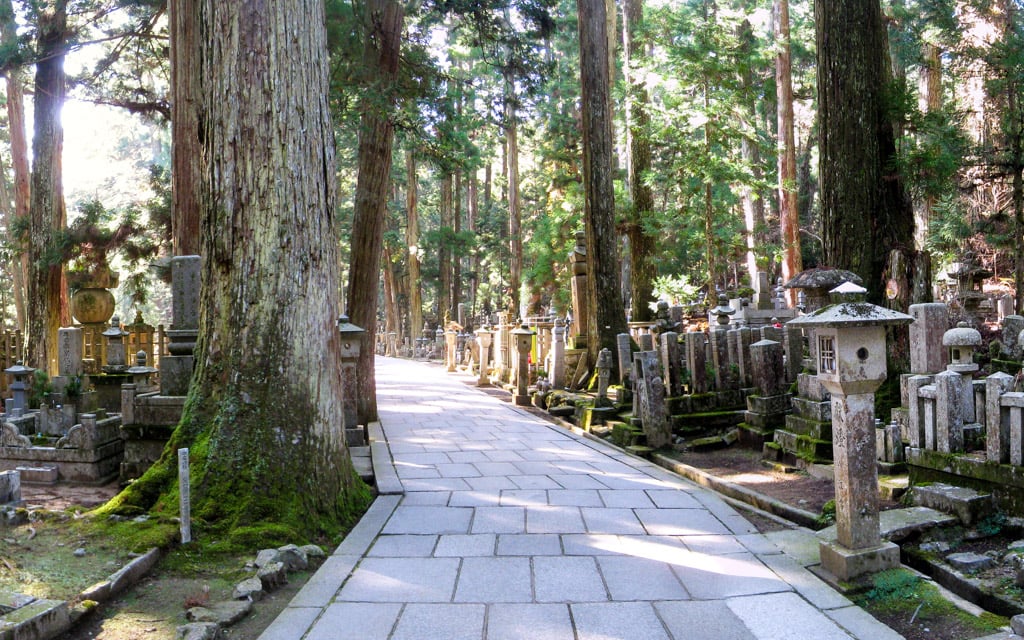
One of my favorite side trips from Osaka is taking the journey up to Mount Koya (Koyasan). Something about this place is both magical and amazing. One of the most sacred places in Mount Koya, and really all of Japan, is Okunoin Temple. This temple is a mausoleum for Kukai or Kobo Daishi, the founder of Shingon Buddhism, the religious community of Mount Koya. It is believed that Kobo Daishi and all who are laid to rest here are not dead but their spirits are waiting in meditation for the arrival of Miroku, the Buddha of the future. Okunoin Temple is a popular pilgrimage spot.
4. Ginkakuji (Silver Pavilion) – Kyoto
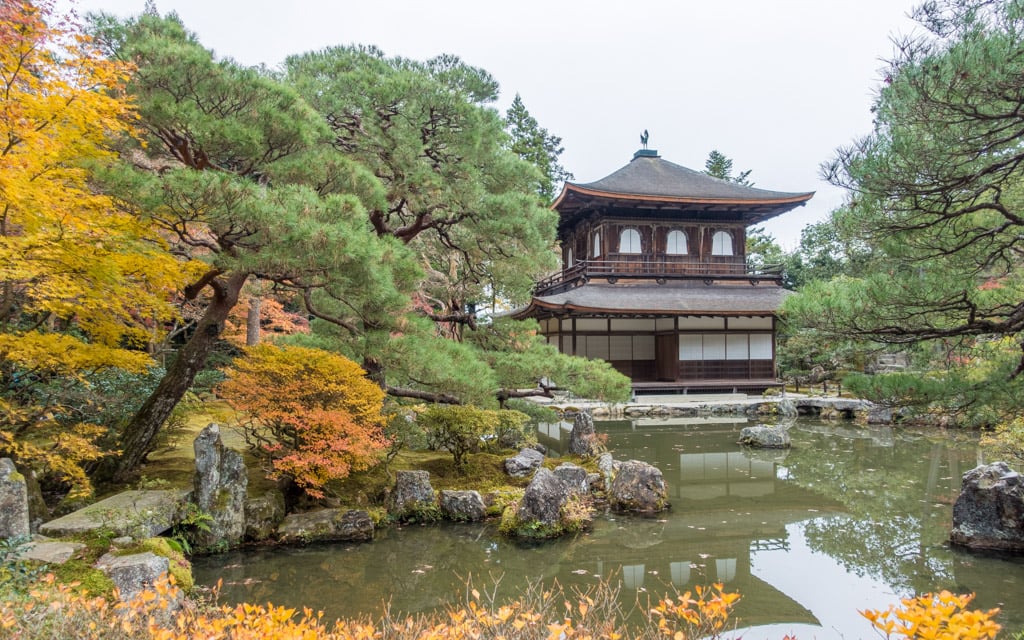
Ginkakuji Temple, more commonly known as the Silver Pavilion, is a Zen temple located in the Higashiyama District of Kyoto. The design of the temple was based off nearby Kinkakuji, the Golden Pavilion (see #3). Ginkakuji was originally built as a retirement villa for shogun Ashikaga Yoshimasa in 1482. Yoshimasa originally planned to cover the pavilion in silver foil. After his death in 1490, the villa was converted into a temple. With his death, plans to cover the pavilion in silver were lost but the nickname stuck.
3. Kinkakuji Temple (Golden Pavilion) – Kyoto
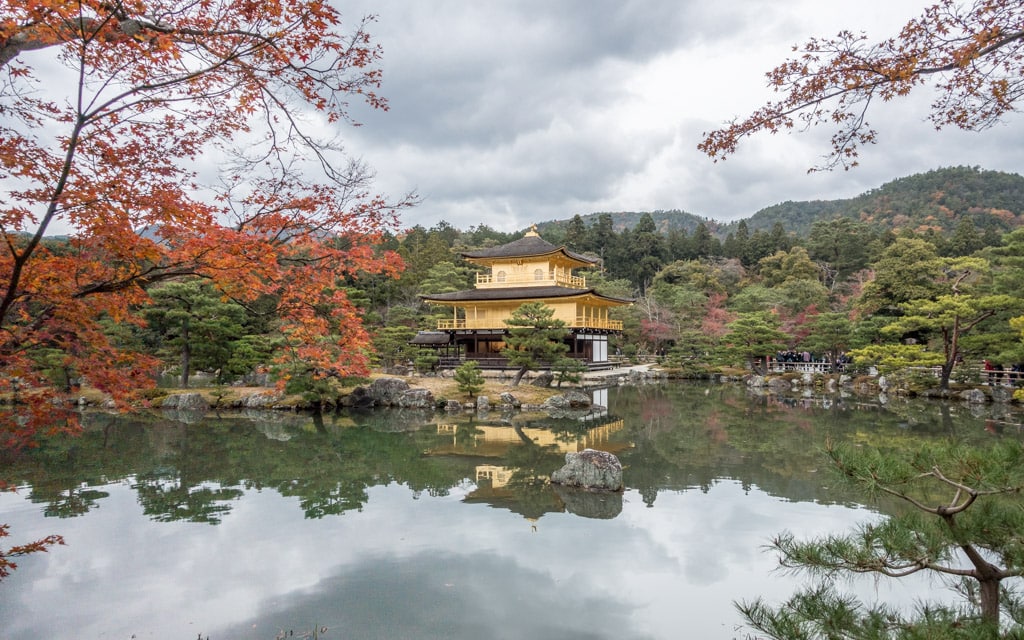
Kinkakuji Temple, better known as the Golden Pavilion, has to be one of the most beautiful temples I have ever laid my eyes on. If you are in Kyoto, this is a must see. Just as with Ginkakuji (Silver Pavilion), a villa was constructed here in 1397 for Ashikaga Yoshimitsu. When he died, the villa was converted into a Zen Temple. The highlight of the temple is the amazing three-story pavilion completely covered in gold. This stunning structure, located on a large peaceful pond, makes for great photos. If you are wondering, the pavilion has been rebuilt many times over the years after being destroyed by fire, war, and earthquakes. The pavilion was last rebuilt in 1955 after being destroying by a monk. The only downside of visiting Kinkakuji Temple is that the grounds are always busy with tourists. Just take a look at all the tour buses out front. Even with that said, it’s still worth the trouble.
2. Todaiji Temple – Nara
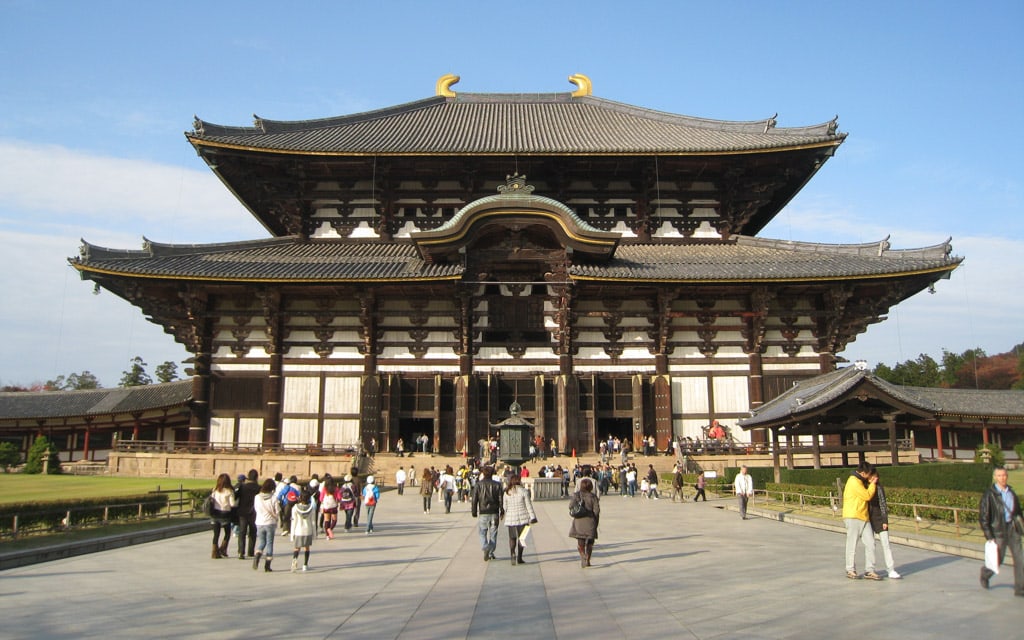
Todaiji Temple, the Great Eastern Temple, is a Buddhist temple complex located in the city of Nara. The temple was completed in 752 during a chaotic time in Japanese history. Some 2,600,000 people helped with the construction of the temple which almost bankrupted Japan. The main hall of the temple, the amazing Daibutsuden or Big Buddha Hall, is the largest wooden building in the world. Not surprisingly, inside the hall is the largest bronze statue of the Buddha in the world. The statue measures in at 16 meters (52 feet) tall. Don’t forget to visit adjacent Nara Park, famous for its wandering deer who follow unsuspecting tourists around begging for crackers. Crackers can be purchased at the park for around 150 yen.
1. Kiyomizudera Temple – Kyoto
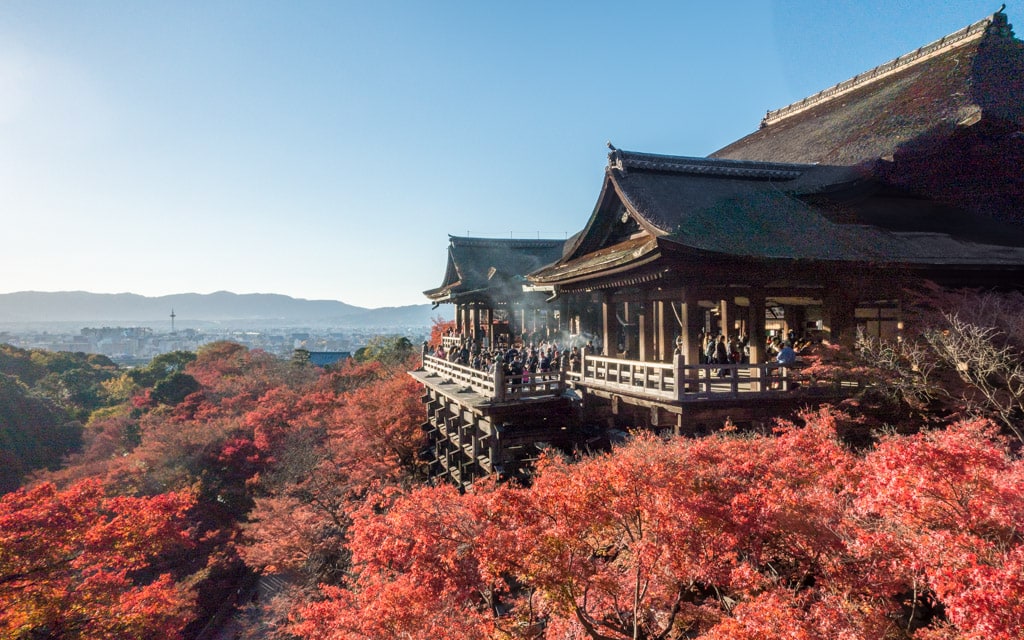
A visit to Japan is not complete without a visit to Kiyomizudera Temple. This amazing temple is one of the most important and celebrated temples in Japan. Kiyomizudera was founded in 778 on the site of Otowa Waterfall in the hills of eastern Kyoto. The waterfall is located underneath the main hall of the temple. Visitors often drink water from the streams, believed to improve health and good fortune in life. The highlight of any visit to Kiyomizudera is the large veranda or wooden stage that extends out from the main hall 13 meters (42 feet) above the hillside below. From this vantage point, you have wonderful views of cherry and maple trees below along with sweeping view of Kyoto in the distance.
Last Updated on February 27, 2024
Related Posts